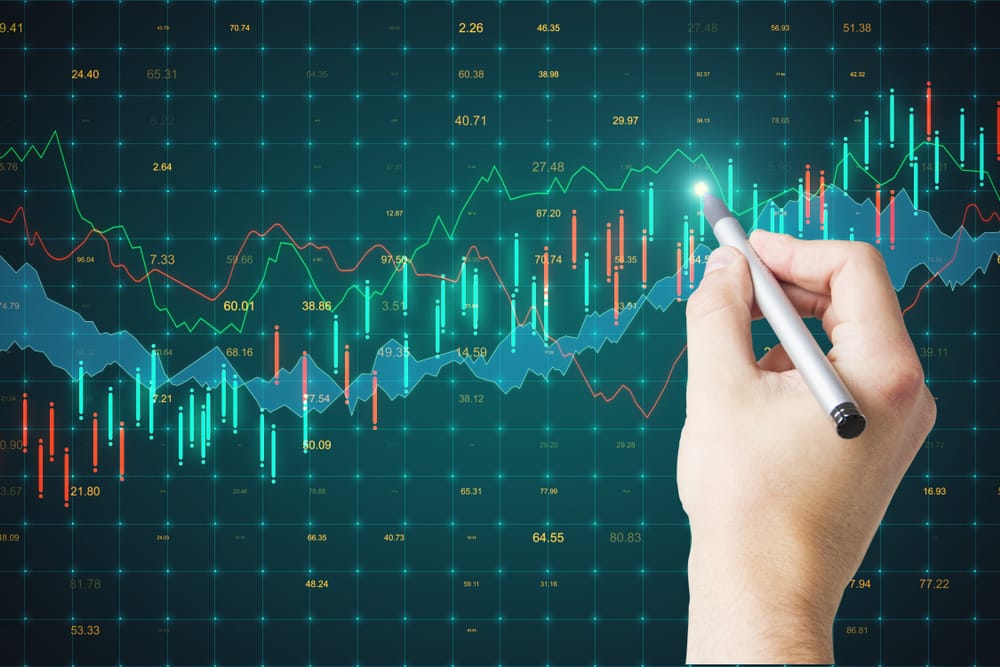Percent Change
This dataset tracks percent change over time.
Latest Value
-6.60
Year-over-Year Change
6.45%
Date Range
4/1/2009 - 1/1/2025
Summary
The Percent Change economic trend measures the quarterly percent change in real gross domestic product (GDP) at an annualized rate. This metric is a key indicator of overall economic growth and performance.
Analysis & Context
This economic indicator provides valuable insights into current market conditions and economic trends. The data is updated regularly by the Federal Reserve and represents one of the most reliable sources for economic analysis.
Understanding this metric helps economists, policymakers, and investors make informed decisions about economic conditions and future trends. The interactive chart above allows you to explore historical patterns and identify key trends over time.
About This Dataset
The Percent Change trend represents the annualized rate of change in real GDP, which is a measure of the total value of goods and services produced in the U.S. adjusted for inflation. Economists and policymakers closely monitor this figure to assess the health and trajectory of the national economy.
Methodology
This data is calculated by the U.S. Bureau of Economic Analysis based on comprehensive surveys and economic modeling.
Historical Context
The Percent Change trend is widely used to inform economic policy decisions and market analysis.
Key Facts
- The Percent Change trend reached a record high of 33.8% in Q3 2020.
- GDP growth averaged 2.3% annually from 2010-2019 prior to the COVID-19 pandemic.
- Percent Change is one of the most closely watched economic indicators.
FAQs
Q: What does this economic trend measure?
A: The Percent Change trend measures the quarterly percent change in real gross domestic product (GDP) at an annualized rate, a key indicator of overall economic growth and performance.
Q: Why is this trend relevant for users or analysts?
A: This metric is widely used by economists, policymakers, and market analysts to assess the health and trajectory of the national economy and inform economic policy decisions.
Q: How is this data collected or calculated?
A: The data is calculated by the U.S. Bureau of Economic Analysis based on comprehensive surveys and economic modeling.
Q: How is this trend used in economic policy?
A: The Percent Change trend is a key input for policymakers at institutions like the Federal Reserve when evaluating the state of the economy and considering monetary policy actions.
Q: Are there update delays or limitations?
A: The Percent Change data is released quarterly by the Bureau of Economic Analysis with a short lag, providing timely insights on economic performance.
Related News

U.S. Trade Deficit Decreases As Businesses Anticipate Tariff Hikes
U.S. Trade Deficit Reaches Two-Year Low Amid Anticipated Tariff Hikes The recent announcement that the U.S. trade deficit has reached a two-year low signals significant developments for the national economy. This change may, in part, be influenced by the anticipation of tariff hikes, which are affecting trade patterns. As this event unfolds, it has implications for the U.S. GDP, underscoring the importance of reducing the trade deficit. Trade tensions have long shaped the global economic landsc

Federal Reserve rate cuts forecast and S&P 500 market reaction
How Federal Reserve Rate Cuts Shape the Economic Landscape The Federal Reserve's decisions impact the financial environment in various ways, often triggering shifts that ripple throughout the economy. The act of altering the effective federal funds rate influences a broad spectrum of financial metrics, including the S&P 500. Notably, these changes have repercussions for market volatility, investor confidence, and the broader economic outlook. Understanding these connections helps place today's

S&P 500 Target Increases Amid Ongoing AI Growth in the US
AI Growth Drives S&P 500 Target Increases AI technology is playing a significant role in propelling S&P 500 target increases, reshaping the United States stock exchange. As Wall Street analysts tune their investment strategies in response to these changes, the S&P 500's rise serves as a mirror reflecting wider economic trends. The increasing targets have brought a new focus to stock market predictions and AI investment, altering the ways both investors and analysts approach the financial landsc

US Treasury yields mixed before expected Federal Reserve rate cut
Understanding Mixed Treasury Yields Ahead of the Anticipated Fed Rate Cut Navigating the complex world of Treasury yields can seem like unraveling a mystery. In the unpredictable arena of mixed yields, understanding their shifts becomes especially crucial. Treasury yields offer a glimpse into Wall Street's trust in the economic outlook. They're shaped by various factors, such as the Federal Reserve's interest rate changes and the broader economic landscape. Right now, investors are watching clo

S&P 500 hits record as U.S. producer prices fall
S&P 500 Reaches Record High as U.S. Producer Prices Decline The S&P 500 reaching a record high suggests a notable moment in market history, particularly as the U.S. Producer Price Index (PPI) shows a downward trend. The link between the stock markets and producer prices demonstrates how interconnected these financial indicators can be. Falling PPI numbers might seem positive, yet they can signal underlying market changes. These shifts invite investors to recalibrate their approaches in response

U.S. Stock Futures Stagnant Despite Positive Jobless Claims and GDP
Why US Stock Futures Remain Stagnant Despite Positive Economic Indicators The current investment landscape is puzzling for many as US stock futures struggle to show a definite trend despite favorable economic signals. These signals, such as jobless claims and Q2 GDP figures, suggest a healthy economy. Given the roles of the stock market and the Federal Reserve's decisions on rate hikes, it is surprising to witness this stagnation. Inflation trends and the Fed's signals about future policies pla
Related Trends
Consumer Price Index for All Urban Consumers: All Items in U.S. City Average
CPIAUCNS
Capacity Utilization: Total Index
TCU
Commercial and Industrial Loans, All Commercial Banks
TOTCI
Share of Foreign Born in Home Owners Loan Corporation (HOLC) Neighborhood A
RLMSHFBHOLCNA
Home Ownership Rate in Home Owners Loan Corporation (HOLC) Neighborhood C
RLMSHHORHOLCNC
Share of Foreign Born in Home Owners Loan Corporation (HOLC) Neighborhood C
RLMSHFBHOLCNC
Citation
U.S. Federal Reserve, Percent Change (REV6243ALLEST157QNSA), retrieved from FRED.